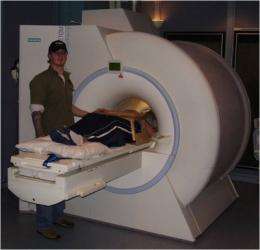Stimulating the brain through touch

(Medical Xpress) -- When learning to master complex movements such as those required in surgery, is being physically guided by an expert more effective than learning through trial and error?
New research by Monash University’s Departments of Psychological Studies and Physiology challenges earlier claims that externally guided (or passive) movement is a superior learning method to self-generated (or active) movement.
In the first study of its kind, researchers discovered that different brain regions become active depending on the type of movement used. Lead researcher Dr. George Van Doorn, head of Psychological Studies, said the findings did not support the view that passive movement was a more effective way to learn.
“There has been much debate over the last 30 years about which form of movement is better,” Dr. Van Doorn said.
“We found that active movements result in greater activation in brain areas implicated in higher-order processes such as monitoring and controlling goal-directed behaviour, attention, execution of movements, and error detection.
“Passive movements, in contrast, produced greater activity in areas associated with touch perception, length discrimination, tactile object recognition, and the attenuation of sensory inputs.”
People were tested while making movements themselves, and while being guided.
“Whilst inside a functional Magnetic Resonance Imaging (fMRI) machine, we had people either freely move their index finger around a two-dimensional, raised-line pattern to measure self-generated touch. Or we had an experimenter guide the person’s finger around the pattern, to measure externally generated touch. Using the fMRI, we found that different brain regions become active depending on the type of movement used,” Dr. Van Doorn said.
Dr. Van Doorn said touch was becoming a popular area of investigation, with more scientists contributing to understanding about this important, though under-acknowledged, sensory system.
All researchers involved in this study are located at Monash University’s Gippsland campus. The study findings were presented at EuroHaptics 2012, a major international conference and the primary European meeting for researchers in the field of human haptic sensing and touch-enabled computer applications.

















